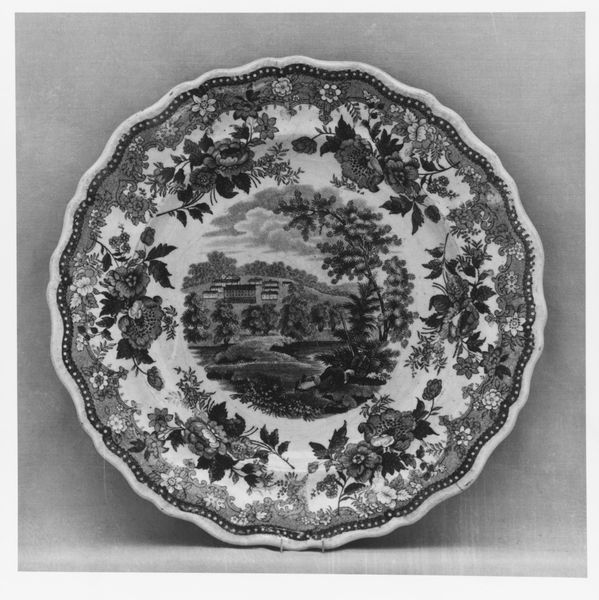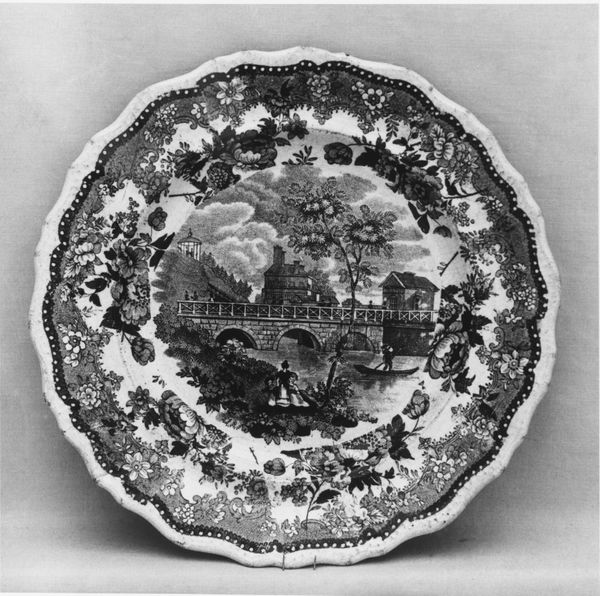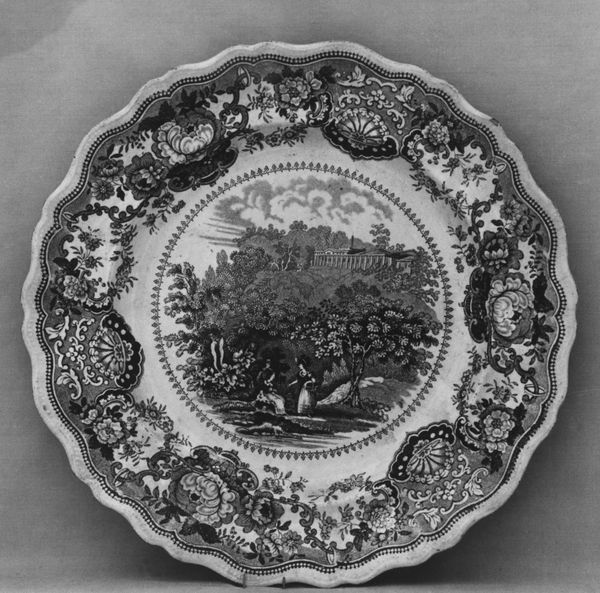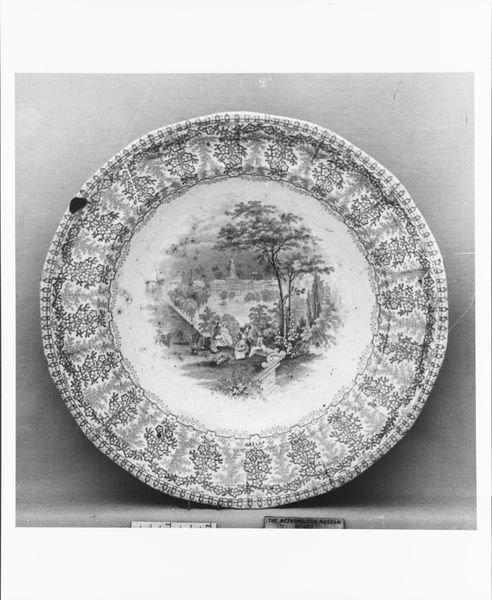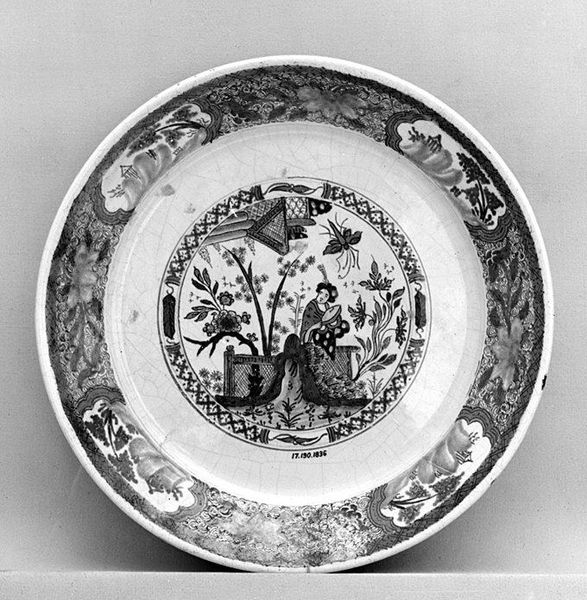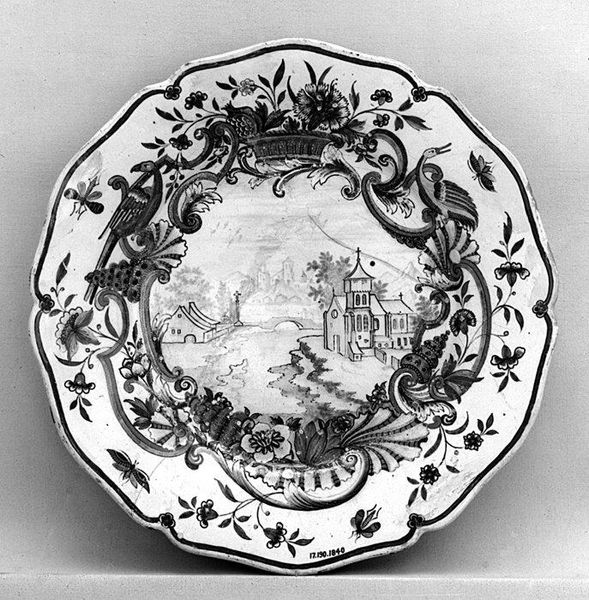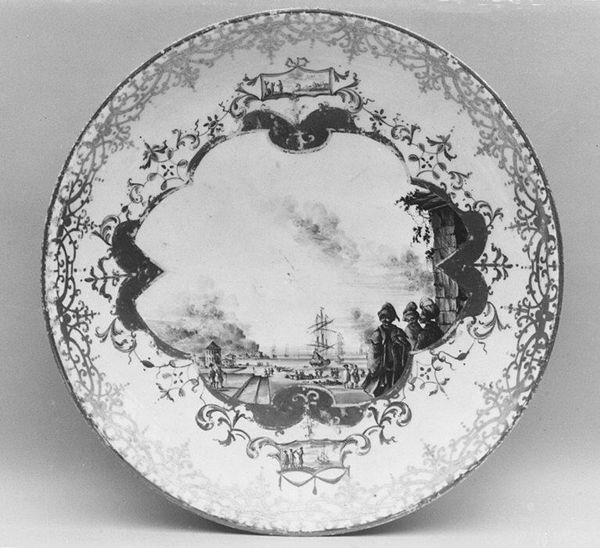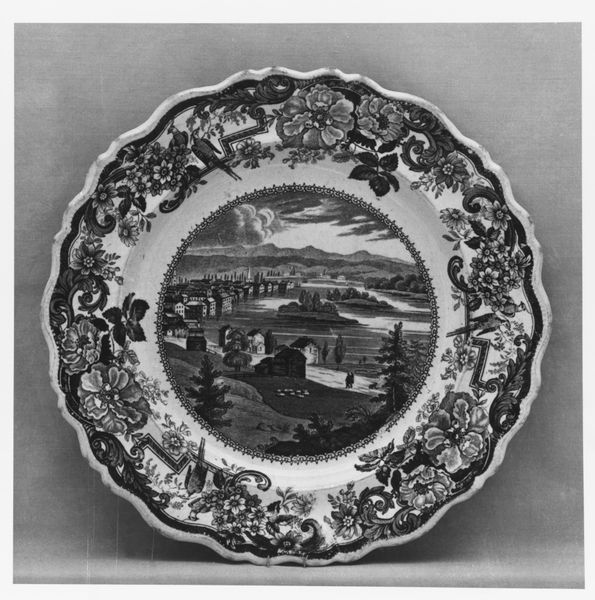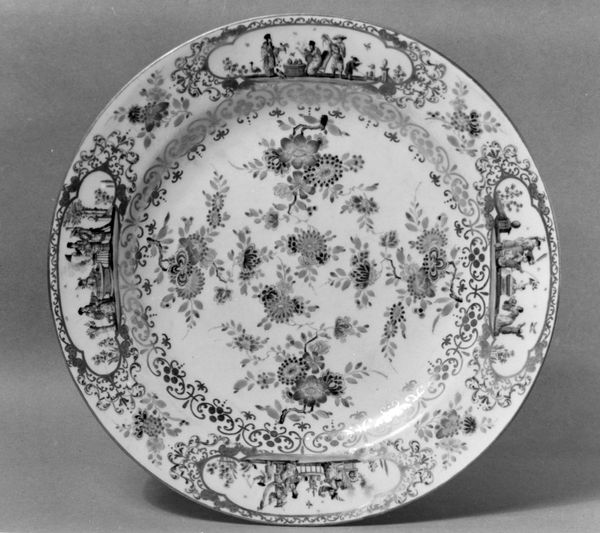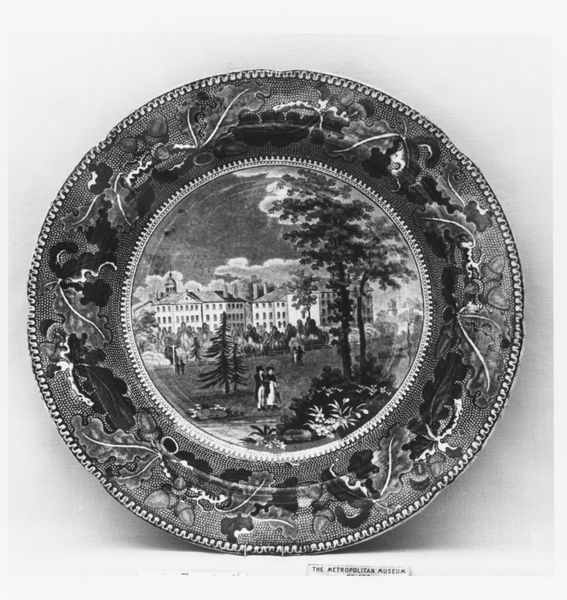
ceramic
#
neoclassicism
#
landscape
#
ceramic
#
flower
#
stoneware
#
decorative-art
Dimensions: Diam. 10 1/2 in. (26.7 cm)
Copyright: Public Domain
Curator: Looking at this ceramic plate from around 1812 to 1834, made by James and Ralph Clews, I'm struck by how ornate it is! The level of detail is remarkable, particularly given that it’s a functional object. Editor: It feels like an idealized fantasy land shrunk down onto a plate. There’s a certain dreamlike quality, though the monochrome palette gives it a formal, almost neoclassical feel. The landscape depicted within contrasts the intricate floral motifs around the edge of the plate. Curator: Absolutely, it’s decorative art intended for domestic consumption. Transfer-printed ceramics like these became popular precisely because they offered affordable access to refined aesthetics. The use of stoneware, and the methods of production reflect changing labor dynamics and mass production. Did the rise of industrial potteries impact what was considered valuable within the decorative arts? Editor: Mass production definitely changed perceptions, enabling wider consumption and altering social values tied to craft and ownership. Dishes became ubiquitous! The plate’s imagery references a specific vision of beauty; it echoes popular tastes in landscape design and architecture, circulating aesthetic ideals and class aspirations. These became potent markers of cultural standing within a rapidly evolving society. Curator: And it is interesting to note how the floral imagery connects with botanical trends of the era, showing how even domestic objects acted as sites where the public was engaging with ongoing debates around scientific exploration and botanical representation. Editor: That’s an interesting point; these designs were often very conscious about cultivating national pride and narratives. How, I wonder, was the narrative molded through a transfer onto such an everyday item, making the beautiful landscape consumable? Curator: Seeing art in utilitarian objects allows us to understand the political charge everyday material holds and reflect on consumption practices and hierarchies that impact social, political, and aesthetic value. Editor: Precisely! It serves as a potent reminder that what we surround ourselves with, even our dishes, speak volumes about our social and cultural identity. It’s art embedded in everyday life.
Comments
No comments
Be the first to comment and join the conversation on the ultimate creative platform.
